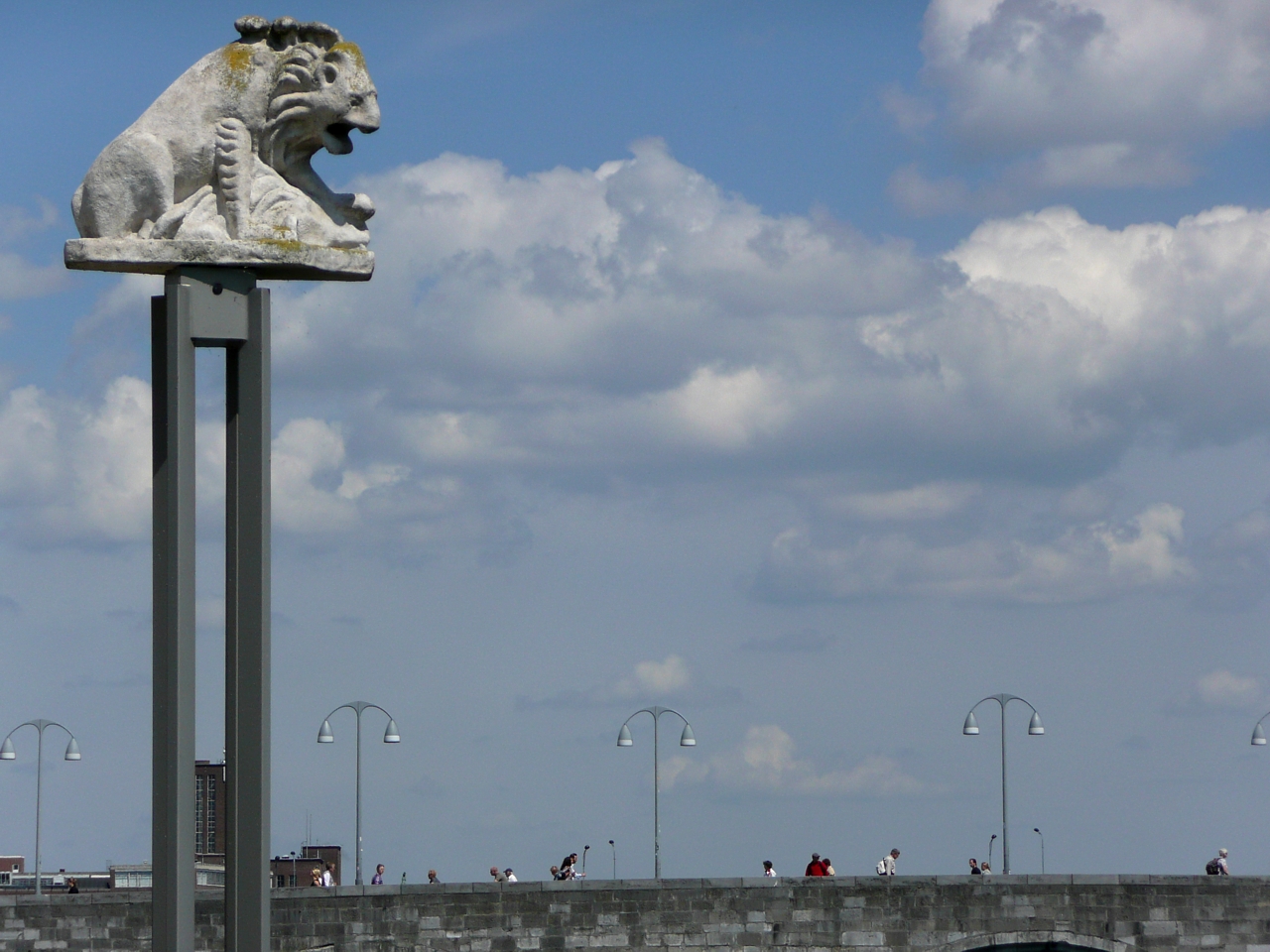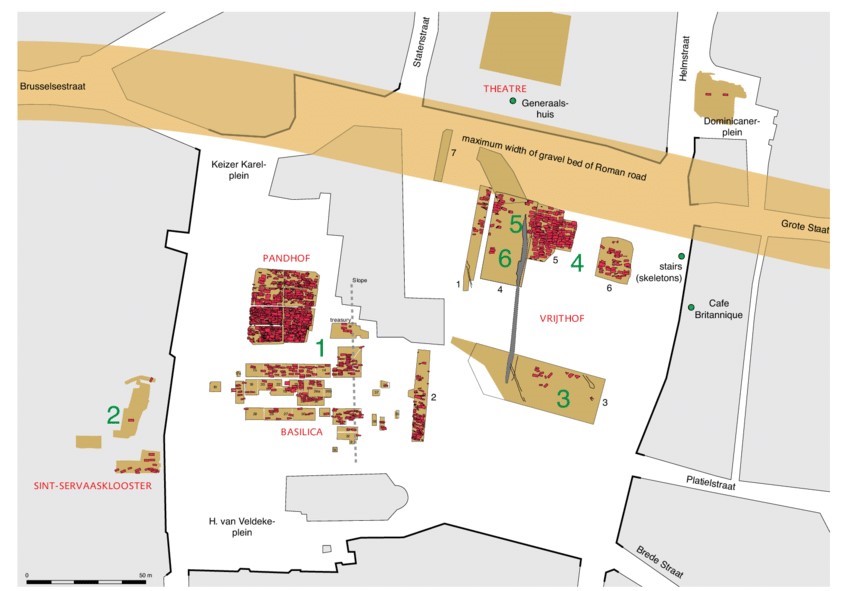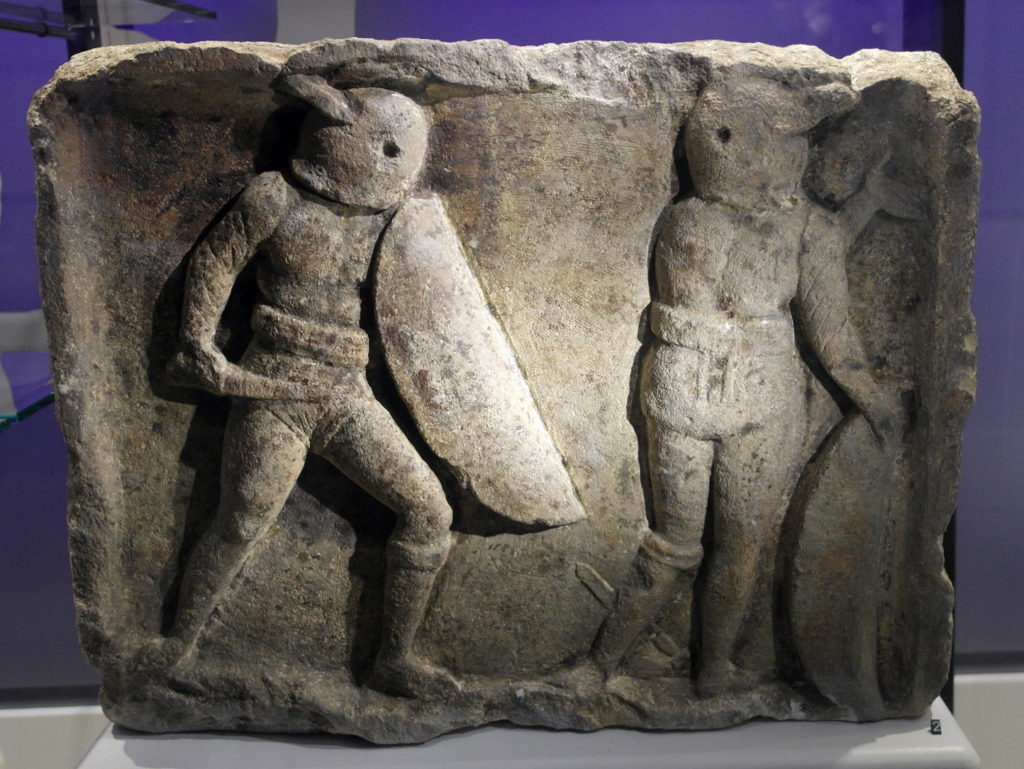
Running from the Rhine Delta in the northern Netherlands to Belgium, the Maas is considered a significant waterway in Europe, and Maastricht literally means “Maas Crossing” in Dutch. The location of Maastricht is the site of a traditional crossing point for the important Maas River (also known as the Meuse) since at least 60 thousand years ago.
Contents
Neanderthal Settlement
The Maastricht region on the banks of the Maas River has a long history of occupation, beginning with the Neanderthals. The site’s earliest settlement was occupied by the Neanderthals (Homo neanderthalensis) just west of Maastricht on the banks of the Maas (Maastricht-Belvedere excavations).
Modern humans (Homo sapiens) also exploited the natural resources along this stretch of riverbank, from the paleolithic (25 kya) to the Celts, who started to occupy Maastricht’s environs a mere five hundred years before the conquest of the Romans. It is believed that the Eburones, the future foil of the Roman Republic, did not displace the Celts, but were part of the same cultural group.
This region of the Maas also coincides with the intersection of the Jeker river. This confluence would lend geographic and spiritual importance historically to the subsequent cultures which settled the area.
The Eburones
The Eburones, as named by Julius Caesar, were the largest tribe of the Germanii, who occupied the region between the Maas River and the Rhine in what is now Belgium, Germany, and The Netherlands. They left no written records, and so what we know of them has been passed on by their contemporaries, the Romans, beginning with Julius Caesar. It is believed that the Euburones were part of the same cultural group as the Celts. Yet when reading the contemporaneous sources such as Julius Caesar, one needs to approach the material with caution as there is much bias incorporated within Roman narratives of the Germania tribes.
The Eburones built a fort just south of the Maas-Jeker confluence in 31 BCE, perhaps in response to the Roman threat downriver. They gave a strong resistance to the conquering Roman army before finally being defeated. Julius Caesar dealt harshly with the tribe, including slaughtering women and children outside the battlefield with impunity. He claimed that he had demolished the tribe. However, Tacitus later stated that they were part of the self-named Tungri tribe. And there is evidence that the Eburones and Batavii were related cultures.
Read more about Julius Caesar here.
The Romans

“Maastricht. Cemeteries in and around the Vrijthof: Cemetery 1 the Servatius cemetery consisting of a northern part (Pandhof) and a southern part (Basilica) dating from the late Roman period to the eighteenth century, cemetery 4 a cemetery dating from the Merovingian period and cemetery 5 dating from the Carolingian period.” (Image credit: Theuws/Kars 2017, fig. 14.1).”
Julius Caesar conquered Gaul around 50 BCE. Traiectum ad Mosam was established as a Roman settlement a few decades later during the reign of Augustus. It is not known precisely when the Roman settled in around the bridge across the Maas. The Romans did not build its castellum to protect the bridge until two hundred years into its occupation of the site, perhaps in response to the sacking of the city by the Franks during the Imperial Crisis. But before the castellum’s construction, it is known that the village was already a thriving Roman town containing inns, villae, half-timber insulae, a sanctuary, apothecary, cobbler, and a bathhouse.
Read more about the Imperial Crisis here.

As conquerors, the Romans’ first concern was to retain its control of the region. Therefore, the fortification of Tongeren in the midst of hostile Germanii tribes, and of Cologne along the Rhine became necessary. Being able to transfer military supplies and soldiers quickly between the two sites meant the creation of the Via Belgica road, retaining contact with the French shore to Cologne. Traiectum ad Mosam was the site of the most navigable Maas River crossing.

Ancient map of Maastricht set against the modern street map. This includes the walls of the Castellum (yellow lines), and the via Belgica road which incorporates the bridge across the Maas River (red). (Image credit: Jona Lendering, Traiectum ad Mosam (Maastricht), CC BY-SA 4.0, OpenStreetMap inset, ODbL)
The Merovingians
After the fall of the Roman Empire, The Merovingian dynasty came into control of the Maastricht environs- a position it would hold for nearly three hundred years.
While the other reaches of the former Empire suffered from power vacuums, which were quickly filled by invading and migrating forces, however, Maastricht’s power shifted to the Frankish Salii, who were already in the area.
The Romans found creative means for protecting the lands in what are now the Low Countries (Belgium, Frankish France, Northern Germany, and the southern region of the Netherlands). Rising sea levels led to severe flooding of the northern coast of the Netherlands. The Salii tribe of the region was allowed to migrate north into the areas surrounding Maastricht’s in 297 in exchange for military conscription of its strongest men. After several Saxon invasions, the addition of the Salii swelled the ranks of the army along the border.
The Salii formed alliances with the Batavii in the area. Once Rome left, their joint cultures led to a Frankish cultural expression in the area, combined with the remaining Roman roads, trade networks, and structures.
Recent excavations have identified a Merovingian cemetery in the Borgharen neighborhood of Maastricht. Interestingly, the cemetery was created by reappropriating a Roman villa on the site. The Merovingian also buried their dead around the tomb of St. Servatius. They eventually rebuilt his tomb, which remains to this day in the crypt of the Sint Servaas Basiliek.
Read more about St. Servatius here.
The Merovingian town was established within the context of Roman Maastricht. The Merovingians, part of the Salian Franks whom Rome allowed to settle in the area, filled the power vacuum left by the collapse of the Empire. It was an organic shift which left the Roman infrastructure in place to serve the Merovingian power complex. The roads were left with less maintenance as kingdoms around the former Empire consolidated. But Roman buildings were used, their materials reused, or their sites repurposed. The numerous Roman villas throughout the Maas region became extensions of military outposts and religious centers.
Therefore, the Roman infrastructure reflected the shift of priorities during Late Antiquity.
Watch the Via Belgica Digitalis documentary on Roman Maastricht and its graves and god tributes along its stretch of the Via Belgica (in Dutch):
Visit Nearby
Museum het Valkhof, Nijmegen (14 km)
Nijmegen and Traiectum ad Mosam were important Roman villages in the Netherlands. This museum features an abundant archaeological collection, sourced from the area.

